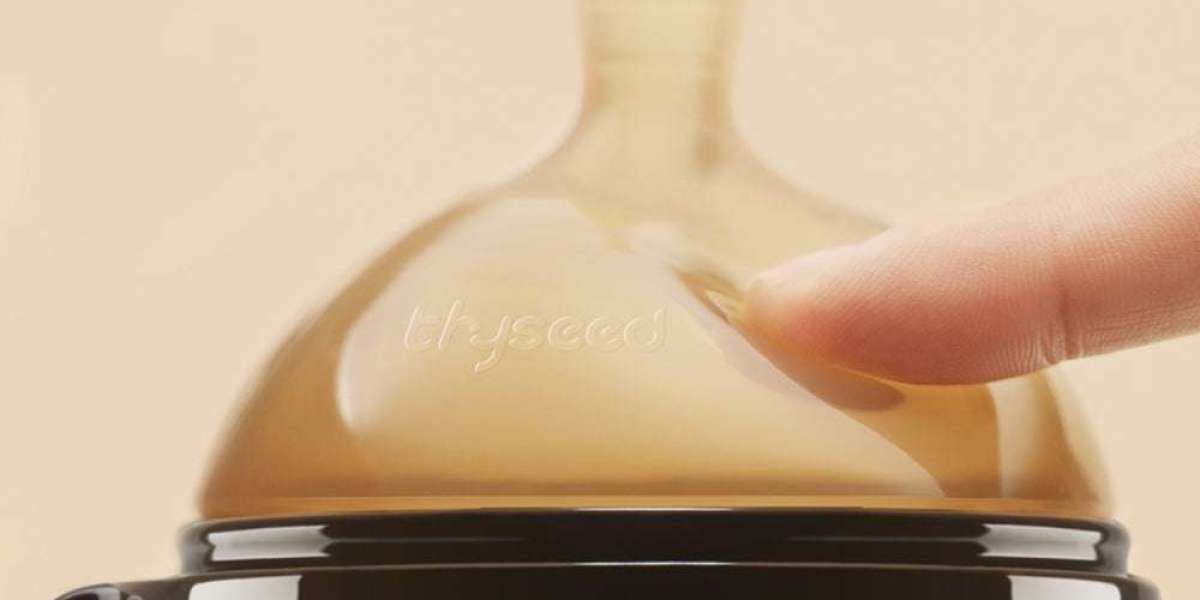When it comes to feeding your little one, selecting the right products is crucial for their comfort, health, and development. Two essential items that parents often consider are straw cups and baby bottle nipples. These products not only aid in transitioning your baby from breast or bottle feeding to more independent drinking, but they also play a significant role in their oral development and overall well-being. This guide will help you navigate the wide range of options available and make informed choices for your baby.
Why Choose Straw Cups for Your Baby?
Straw cups are a fantastic tool for helping babies transition from bottles to more independent drinking. They are designed to promote healthy oral development and are often recommended by pediatricians and speech therapists. Unlike traditional sippy cups, which can encourage a sucking motion similar to bottle feeding, straw cup require babies to use a more mature drinking technique. This helps in strengthening the muscles used for speech and feeding.
Benefits of Using a Straw Cup
Promotes Oral Development: Straw cups encourage the use of different muscles in the mouth compared to bottles and sippy cups. This helps in developing the muscles needed for speech and chewing, making them a better option for long-term oral health.
Prevents Tooth Decay: Traditional sippy cups can allow liquids to pool around a baby's teeth, leading to an increased risk of tooth decay. Straw cups, on the other hand, deliver the liquid directly to the back of the mouth, minimizing contact with the teeth and reducing the risk of cavities.
Encourages Independence: Straw cups are designed to be easy for little hands to hold and use, promoting independence as your baby learns to drink on their own. They are often spill-proof, which makes them a convenient choice for both parents and babies.
Versatile Use: Many straw cups are designed for use with various types of liquids, including water, milk, and juice. This versatility makes them a practical choice for everyday use, whether you’re at home or on the go.
How to Choose the Right Straw Cup
When selecting a straw cup for your baby, there are a few key factors to consider:
Material: Straw cups are typically made from plastic, silicone, or stainless steel. Plastic and silicone options are lightweight and easy for babies to handle, while stainless steel cups are more durable and can keep liquids at the desired temperature for longer.
Design: Look for a cup with a design that suits your baby's needs. Some cups come with removable handles, making them easier for younger babies to hold. Others have weighted straws that allow for drinking from any angle, which is particularly useful for babies who are still learning to use a straw.
Ease of Cleaning: Choose a straw cup that is easy to disassemble and clean. Some cups come with a straw brush, which makes it easier to clean the inside of the straw. Dishwasher-safe cups are also a convenient option for busy parents.
Leak-Proof Feature: A good straw cup should be spill-proof or leak-resistant. This feature is especially important when you’re on the go, as it prevents messes in your diaper bag or car.
Understanding Baby Bottle Nipples
Baby bottle nipples are another critical component of your baby's feeding journey. The right nipple can make a significant difference in your baby's comfort and feeding experience. Baby bottle nipples come in various shapes, sizes, and flow rates, and choosing the right one depends on your baby's age, feeding style, and specific needs.
Types of Baby Bottle Nipples
Standard Nipples: These are the most common type of bottle nipples and are usually round with a basic shape. They are suitable for most babies and are available in various flow rates, from slow to fast.
Orthodontic Nipples: Designed to mimic the shape of a mother's breast, orthodontic nipples encourage natural sucking motion and reduce the risk of nipple confusion. They are a good option for babies who are breastfed but also use bottles.
Anti-Colic Nipples: These nipples are designed with vents that help reduce the amount of air a baby swallows while feeding, which can minimize colic and gas. Anti-colic nipples are ideal for babies who are prone to digestive discomfort.
Y-Cut Nipples: Y-cut nipples have a Y-shaped slit instead of a traditional hole. These are designed for thicker liquids like formula with added rice cereal or pureed foods. The flow rate adjusts depending on the baby’s sucking strength.
Choosing the Right Baby Bottle Nipple
When selecting a baby bottle nipple, it’s important to consider your baby’s age, feeding habits, and any specific needs they may have:
Flow Rate: Nipples come in different flow rates, typically ranging from slow to fast. Newborns usually start with a slow-flow nipple, while older babies may prefer a medium or fast-flow nipple as they get accustomed to feeding.
Material: Baby bottle nipples are usually made from silicone or latex. Silicone nipples are more durable, hold their shape well, and are often recommended for babies who are allergic to latex. Latex nipples are softer and more flexible, which some babies may prefer.
Shape: The shape of the nipple can impact how easily your baby accepts the bottle. Some babies may prefer a nipple that closely resembles the breast, while others may do better with a standard or orthodontic nipple. If your baby is having trouble latching onto the bottle, experimenting with different shapes may help.
Anti-Colic Features: If your baby is prone to gas or colic, consider nipples with anti-colic features. These nipples typically have venting systems that reduce the amount of air your baby swallows, which can help alleviate discomfort.
Conclusion
Choosing the right straw cup and baby bottle nipple can make a significant difference in your baby's feeding experience and overall development. Straw cups are an excellent tool for promoting oral development and encouraging independent drinking, while the right baby bottle nipple can ensure a comfortable and efficient feeding process. By considering factors such as material, design, flow rate, and specific needs, you can select the best products to support your baby's growth and well-being. Remember, every baby is different, so it may take some trial and error to find the perfect match for your little one.








